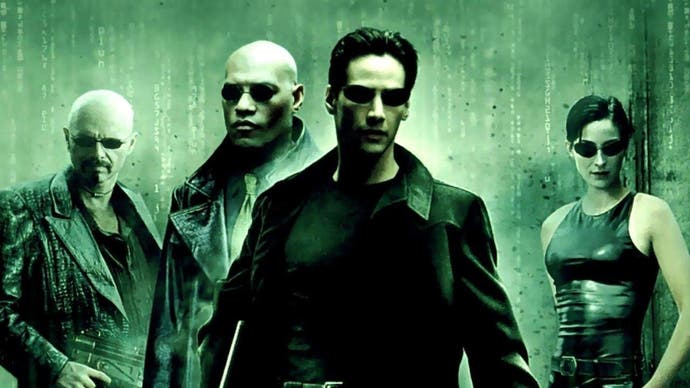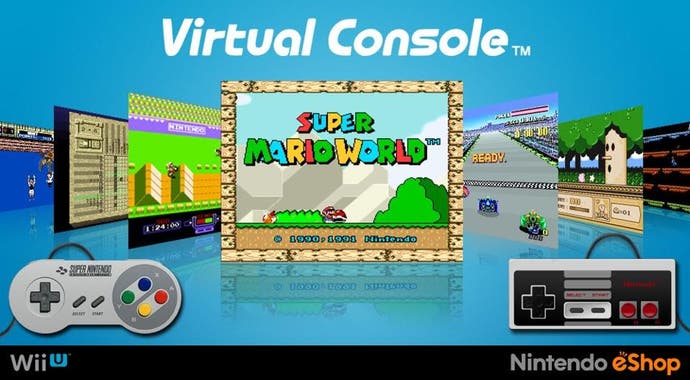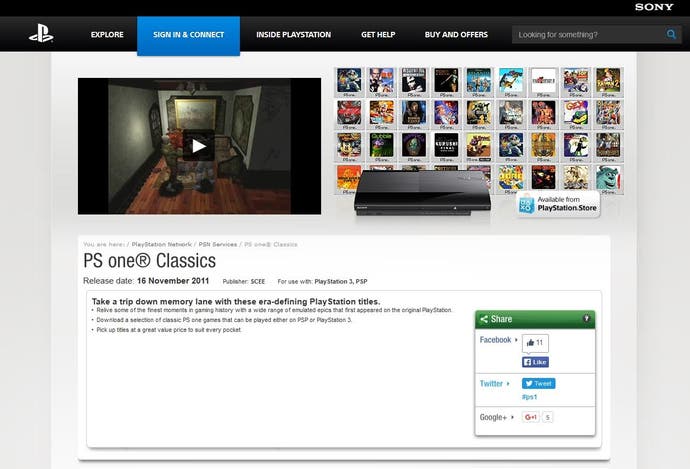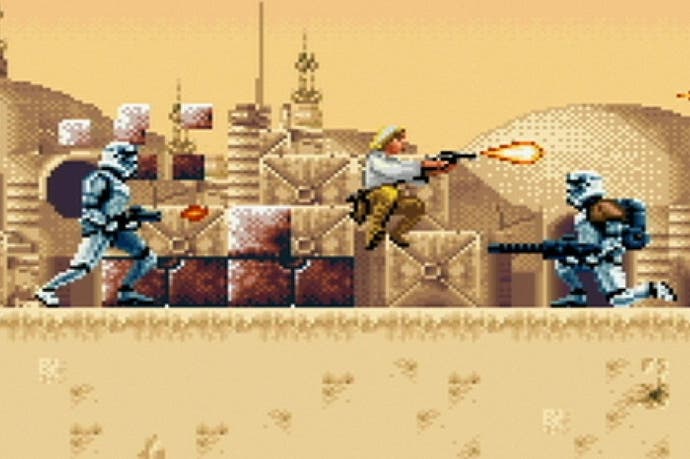Preserving the past: why emulation matters
The option to play games released 15 years ago shouldn't be a novelty.
Sony's stealth announcement that it can emulate PS2 games on the PlayStation 4, as revealed by the bundle of retro Star Wars games included with the Battlefront-branded console, has quite rightly resulted in a lot of excitement and anticipation. Surely the floodgates must soon open, releasing hundreds of beloved classics back into the PlayStation ecosystem?
That would be the dream, but the reality is likely to be rather more muted. The PlayStation Store previously carried a range of PSOne and PS2 Classics during the last generation of hardware, but while many great games were included, many more never saw the light of day. Some of the choices were downright bizarre, and based as much on which publishers made their catalogues available, and which games could be reliably emulated without issue.
This is the problem that gaming will always face when it comes to keeping its history - even from only a few years ago - alive and accessible.
It's a problem that's also unique to gaming, given the simple fact that game code interacts with its platform in far more complex ways than video, audio or text do. Vast swathes of Hollywood history are lost every time home entertainment formats move forwards, as hundreds of titles fail to make the transition and get left behind. The solution, in those cases, is always fairly simple though - provided one copy of the film still exists, it can be saved.

With software, you don't just need the game, you need the hardware and the operating system required for it to work. Every new hardware generation moves the goalposts anew, potentially condemning more titles to obscurity. And the issue starts to get really complicated now that we're reaching the point where emulation must cope with relatively sophisticated machines like the PS2.
Emulating 8-bit and 16-bit consoles is comparatively easy. Once you hit the 21st century though, when consoles began to be built around more distinctive chipsets, and games came to rely on distinctive software architecture and online features, consistent emulation becomes a real challenge. It's a challenge that needs to be faced.
Just look at the number of classic PC games from the DOS era that refuse to play nicely with modern Windows operating systems. Consider the games released for long-dead console platforms such as the WonderSwan or the NeoGeo. Having the cartridge is only part of the solution here. If the platform itself is gone, the code might as well be made out of spaghetti.
This is why emulation matters. Not just the homebrew emulation that sees enthusiasts cracking the guts of retro machines and sharing their software libraries for free, but an actual industry-wide acceptance that emulation is how games must be saved for future generations.
It's not just a commercial imperative, but an artistic one. I won't pretend to argue that Star Wars: Bounty Hunter is a timeless gem that the players of 2035 need to experience, but it is part of the tapestry of the games medium, and the more of that we can retain and archive, the better our understanding of the past will become.
It's an area that Nintendo understands incredibly well. As a company, Nintendo has always seemed more concerned with its historical legacy than with future-proofing the present, and while that doesn't always translate to enormous market share, it does mean that Nintendo players are plugged into their history in a way that Sony and Microsoft customers are not.

Super Mario Maker is the perfect example. Not only does it mash up every era of a classic franchise, it also offers Easter Eggs related to dozens of other Nintendo series. My kids love it, but they also love the fact that they can then head to the eShop and try those classic early Mario games in their original form. My son's current obsessions are not the big blockbusters fighting for window space in Game, but NES classics Mega Man 2 and Punch Out, both of which caught his eye as he was browsing the Virtual Console line up. He's having fun, but more importantly he's also getting a deeper perspective on how games work, and how they've evolved over the years.
While it may have lagged behind in terms on online multiplayer and social features, Nintendo has always done a great job of ensuring that its back catalogue remains available and appealing in the digital age. Meanwhile, Sony and Microsoft now seem fixated on porting over games that are barely two years old, such is the lack of compatibility between their new and old consoles. That's the price of progress, of course, and nobody would argue that future console design should be dictated by the need to accommodate old games. There needs to be a balance though, and a consistent approach to emulation at a platform level would benefit everyone.
It was Star Wars that inspired this feature, so it's fitting that Star Wars should provide a convenient example. As the world works itself into a right old lather over The Force Awakens, we take it for granted that we can prepare ourselves for the big event by bingeing on the original movies - on DVD, on Blu-ray, or on TV. They're always there. Always accessible.
Now consider, for instance, Rise of the Tomb Raider. Not a Star Wars-sized franchise by any means, but still a brand with a long and storied legacy to fall back on. What if you're a lifelong fan, your passion revived by the new game, and you want to revisit this classic series? You're out of luck, basically. Some of the titles have been made available digitally, but not all of them. Some have been given the remaster treatment, others have not.

Platform exclusivity plays a part, of course, as Xbox One owners won't have access to the PlayStation Store that hosted these re-releases, but nor, ironically, will PlayStation 4 owners. Even within the PlayStation console family, what's available changes with the wind. Try finding the PSOne and PS2 Classics on the PlayStation Store website these days, if you can. It's a mess.
There are certainly technical hurdles to overcome, but they can't just be treated as an optional extra to be tackled at some point in the future - by then even more games will have been left behind.
This is why emulation is important. It's not just about being able to revisit beloved childhood favourites, though that is certainly part of it. It's about ensuring that the very history of the medium doesn't end up fragmented and lost, with the vast majority of games - and the work of thousands of creative people - lost to the ether for no good reason. There are certainly massive technical hurdles to overcome, but they can't just be treated as an optional extra to be tackled at some point in the future, because by then the hardware will have moved forwards again, and even more games will have been left behind.
Of course, emulation already exists and performs the archival function I'm talking about. You can find and download pretty much every game ever made, but to do so you have to step outside the industry and, technically, break the law. That's bizarre. Can you imagine a situation where the only way to watch The Matrix would be to download it from a torrent site or buy a bootleg DVD?
And yet that's exactly the situation players face when they want to experience a blockbuster game from 1999, while games publishers and platform holders treat emulation as an afterthought. Here's hoping that Sony's Star Wars-inspired retro jaunt is the start of something bigger - a real ongoing engagement with gaming's past, and not just a timely marketing gimmick.

